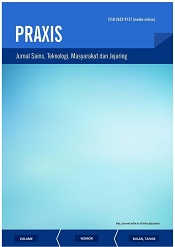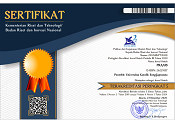Kajian Environmental Justice dalam Konflik Rohingya
Abstract
Keywords
Full Text:
PDFReferences
Agusta, I. (2003). Teknik Pengumpulan dan Analisis Data Kualitatif. Pusat Penelitian Sosial Ekonomi. Litbang Pertanian, Bogor.
Anderson-Scott, R. M. (1997). Religious beliefs, self-esteem, and psychological adjustment of African-American women in the black church. Dissertation Abstracts International: Section B: The Sciences and Engineering.
Astiana, I. (2017). Militer Myanmar usir warga Rohingya masih tersisa di desa. Merdeka.Com, p. https://www.merdeka.com/dunia/militer-myanmar-usir. Retrieved from https://www.merdeka.com/dunia/militer-myanmar-usir-warga-rohingya-masih-tersisa-di-desa.html
Charlier, C., & Ngo, M. A. (2012). Geographical indications outside the European Regulation on PGIs, and the rule of the free movement of goods: Lessons from cases judged by the Court of Justice of the European Communities. European Journal of Law and Economics. https://doi.org/10.1007/s10657-012-9333-4
Dariyanto, E. (2017, September 5). Krisis Rohingya Kekayaan Rakhine, Kota “Rohingya” yang Tersandera Konflik. Detiknews, p. https://news.detik.com/internasional/d-3629853/kek. Retrieved from https://news.detik.com/internasional/d-3629853/kekayaan-rakhine-kota-rohingya-yang-tersandera-konflik
Dyah Ratna Meta Novia, A. Y. (2018). Motif Bisnis di Balik Krisis Rohingya? Republika.Co.Id, p. http://internasional.republika.co.id/berita/intern.
Euis Amalia. (2011). Transformasi Nilai-nilai Ekonomi dalam Mewujudkan Keadilan Distributif Bagi Penguatan Usaha Kecil Mikro di Indonesia. Al-Iqtishad Jurnal Ekonomi Syariah, III(keadilan ekonomi), http://journal.uinjkt.ac.id/index.php/iqtishad/art. Retrieved from http://journal.uinjkt.ac.id/index.php/iqtishad/article/view/2497
Fajar Shadiq. (2017, September 16). Gerakan Perlawanan Bangsa Rohingya: Sejarah dan Evaluasi. Kiblat.Net, p. https://www.kiblat.net/2017/09/16/gerakan-perlawan. Retrieved from https://www.kiblat.net/2017/09/16/gerakan-perlawanan-bangsa-rohingya-sejarah-dan-evaluasi/3/
Hakonen, M., & Lipponen, J. (2008). Procedural justice and identification with virtual teams: The moderating role of face-to-face meetings and geographical dispersion. Social Justice Research. https://doi.org/10.1007/s11211-008-0070-3
Kaika, M. (2003). Constructing Scarcity and Sensationalising Water Politics: 170 Days That Shook Athens. Antipode. https://doi.org/10.1111/j.1467-8330.2003.00365.x
Mohai, P., Pellow, D., & Roberts, J. T. (2009). Environmental Justice. The Annual Review of Environment and Resources. https://doi.org/10.1146/annurev-environ-082508-094348
Revolusi, A. (2013). Causative Factors Rakhine and Rohingya Ethnic Conflict in Myanmar in 2012. Ilmu Hubungan Internasional, FISIP, Universitas Jember (UNEJ).
Robinson, W. (2009). Saskia Sassen and the Sociology of Globalization: A Critical Appraisal. Sociological Analysis.
Shorter-Gooden, K. (2004). Multiple resistance strategies: How African American women cope with racism and sexism. Journal of Black Psychology. https://doi.org/10.1177/0095798404266050
Tan, K. C. (2016). Justice between sites of justice. Law and Philosophy. https://doi.org/10.1007/s10982-015-9254-9
Wouters, H., & Bol, D. (2009). Material Scarcity. Technology.
DOI: https://doi.org/10.24167/praxis.v1i1.1623
View My Stats | ISSN 2622-9137 (media online)







